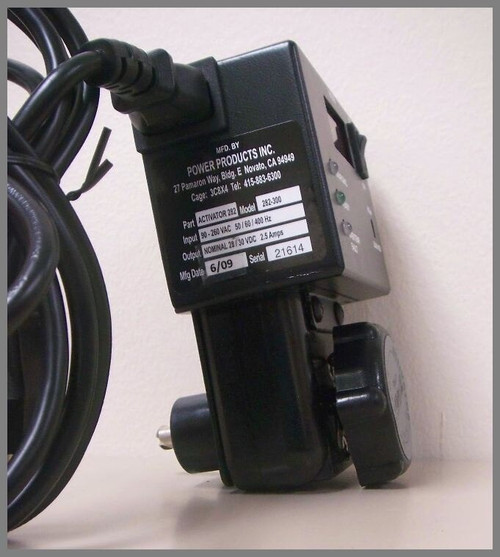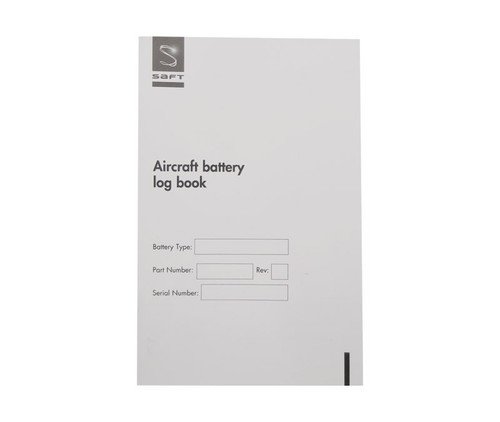Related Items

CHRISTIE® RF80-M Aircraft Lead Acid & Ni-Cad Battery Charger / Analyzer

CHRISTIE® RF80-K Aircraft Lead Acid & Ni-Cad Battery Charger / Analyzer

Power Products 4126 Model D-50 Aircraft Lead Acid & Ni-Cad Battery Analyzer

Power Products 4142 Model ALPHA C-25 Aircraft Lead Acid & Ni-Cad Battery Charger

Power Products 4105 Model Activator 282 24-Volt Aircraft Lead Acid & Ni-Cad Battery Charger

Power Products 4159-CML Model CA-1550-CML Aircraft Battery Lead Acid & Ni-Cad Battery Charge

JFM 9891601102 miniMasterCharger Series II Microprocessor Controlled Battery Charger-Analyzer

JFM 9899602001 SuperMini Intelligent Battery Charger-Analyzer for Battery Systems ( Up to 40 A-hr )

SAFT 016493-000 Ni-Cad Aircraft Battery Logbook
Approvals and Conformities
Product Attributes
 Country of Origin
Country of Origin
The simple to set controls plus the condensed operating procedure found on the front panel makes the Supercharger a very easy to operate CHARGER/ANALYZER, which combined with easy to read CURRENT, VOLTAGE, TIME and STATUS indicators, makes it also a very simple unit to monitor.
The Supercharger is also designed for speed, for it can charge two batteries, (actually, any number of batteries where the total number of cells is 50 or less), at maximum currents, and it can also discharge two batteries at reduced currents, or one battery (25 cells or less) at maximum current.
The Supercharger also provides a Voltage Control enhancement that allows the ChargerAnalyzer, originally designed for Constant Current operation on Nickel-Cadmium batteries to also be able to handle Lead-Acid and other type of rechargeable batteries, where the end voltage is a more reliable indicator of the state of charge (as opposed to Nickel-Cadmium batteries).
Dependability is another great plus of the Supercharger. 100% SOLID STATE circuitry requires no scheduled maintenance. No relay contacts to inspect and clean. No high current carrying contacts to arc and burn. A simple performance verification procedure is all it takes to determine if the instrument requires re-calibration or repair.
This instrument is also protected against certain internal performance deviations and programming errors, plus it is also designed to sense certain battery abnormalities to protect the instrument and battery from possible damage. In the event that any malfunction takes place, VISUAL and AUDIBLE indicators will turn on, alerting the operator and preventing any further operation of the unit.
The Supercharger 60 Battery Charger-Analyzer System is comprised of the Charger-Analyzer, the Temp-plate, the Battery Cable and several accessories.
The Charger-Analyzer is basically a precision programmable constant current source (for charge) and a programmable constant current sink (for discharge) combined with voltage and temperature sensing circuits for total battery monitoring.
The specially designed circuitry provides a performance not achieved by any of the older conventional battery charging methods. The Supercharger will deliver current into a short circuit or a battery or combination of batteries totaling 50 cells, within ±1% of the programmed value, independent of line voltage variations (within ±10% of the nominal line voltage).
The control circuitry of the Charger-Analyzer consists of a CONTROL SWITCH, a CLOCK, a TIMER, a CURRENT CONTROL, a SYSTEM MONITOR, a POWER REGULATOR and a VOLTAGE CONTROL CIRCUIT.
The CONTROL SWITCH receives the function commands from the function selector switch on the front panel and outputs control signals to the rest of the circuit boards as well as to the charge SCR'S and discharge transistors.
The TIMER provides all the required timing functions related to the charge and discharge durations. Digital time and speed selectors provide the external inputs, while the four digit readout of the CLOCK provides the elapsed time display.
The CURRENT CONTROL interprets the programmed current values and controls the angle of firing of two SCR's to maintain a constant current in accordance to the feedback received from a precision shunt.
Display of current is provided by an independent Digital Ammeter that uses the same shunt used by the CURRENT CONTROL circuit.
Inputs from the TIMER, the SYSTEM MONITOR and the CONTROL SWITCH, determine the operating mode of the CURRENT CONTROL circuit.
The SYSTEM MONITOR provides several safeguarding functions. It compares the measured current against the programmed value and if they differ by more than one ampere, operation is halted and a current malfunction is indicated.
It measures the battery voltage and compares it with the programmed number of cells. From there, it determines during charge if the total voltage exceeds the equivalent of 1.75 V per cell, indicating an Overvoltage condition, or during discharge if the total voltage is below the equivalent of 1 volt per cell, indicating the end of the discharge cycle.
It checks for polarity reversal at voltages as low as .25V, as well as an absolute Overvoltage at 85 volts, both generating a voltage malfunction indication that prevents any further operation of the unit.
It measures the temperature of the discharge heat dissipators and signals an overheat malfunction if the internal temperature exceeds 90ºC, as it could be caused by a fan failure or an installation with restricted air flow. It also monitors the temperature of the batteries being charged (via the TEMP-PLATE) and terminates the charge, indicating battery Overtemp, in the event of battery overheating that may lead to thermal runaway.
The POWER REGULATOR provides all regulated voltages and power amplification as required by the various circuits.
The VOLTAGE CONTROL CIRCUIT provides the functions that regulate the charging current in the Constant Voltage (float) mode and in the Peak Voltage mode, transfers from Main to Topping charge on a voltage peak or ends charging on a voltage peak (new feature).
The DIGITAL VOLTMETER provides internal battery voltage readings with resolutions of 0.1V and 0.01V, while a selectable external position allows single cell measurements to a resolution of 0.001V.
Additional protection is provided by a high speed current limiter for the discharge transistor bank, a slow speed current limiter for the charge circuit and a magnetic circuit breaker capable of tripping under fast high current overload conditions.



 INTERNATIONAL SHIPPING
INTERNATIONAL SHIPPING